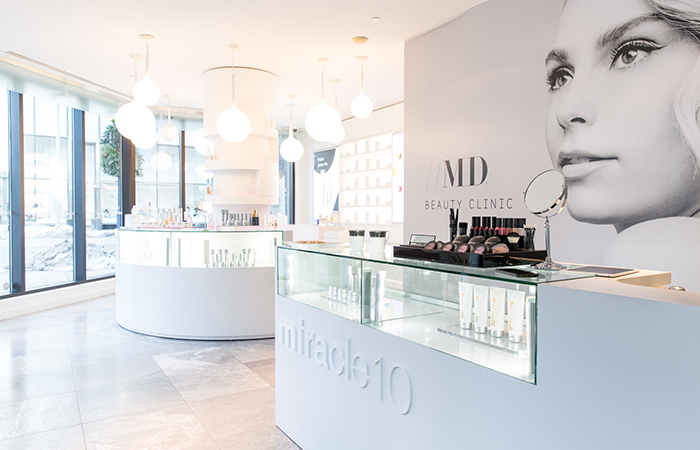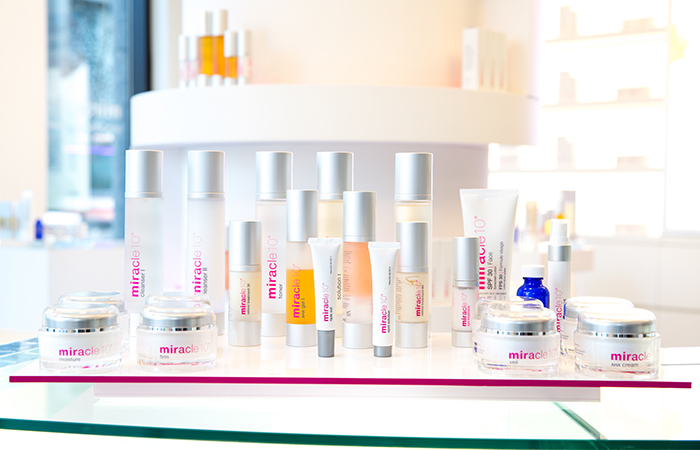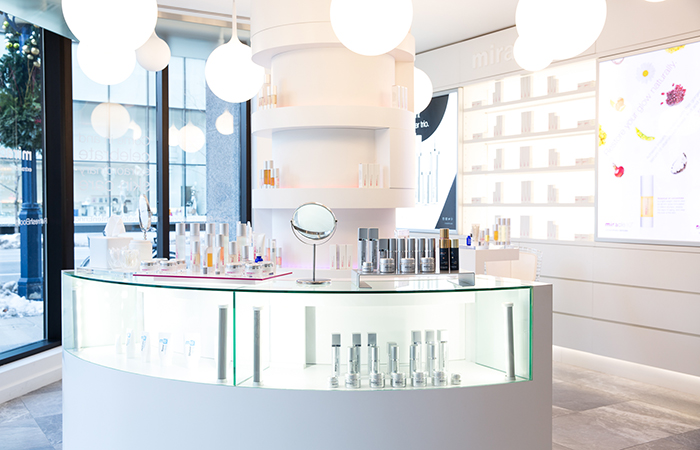
If you have ever noticed that your skin feels dry, tight, lackluster and dull when you’re on an airplane, you’re not alone. Add in winter conditions outside of that airplane, and it’s like your skin is crying out for hydration. We’re on a mission to make sure our skin is properly hydrated and taken care of this winter, so we enlisted the help of Toronto-based skin care boutique Miracle 10 and Elizabeth Lista, the Director of Communications and Operations at MD Beauty Clinic and Miracle 10. Lista shares her skin care secrets for keeping you looking fresh the next time you travel.
What are the basics when it comes to keeping your skin hydrated?
There are some skincare basics as well as some lifestyle basics that we treat as gospel around here. In terms of lifestyle basics:
- Be good to your body! We always hear that you should drink a lot of water. And this is important, but really, you need to consider this advice as part of a broader wellness framework. Drink water, yes, but also eat well, get enough sleep, exercise. Your skin is an organ and just like any other organ system, it’s going to look better, feel better and work better if you treat it well.
- Install a humidifier in your home or place a mini one in your bedroom. Canadian winters are so hard on the skin, using a humidifier will help to replenish the skin’s water content.
- Wash your face in lukewarm water and avoid overly hot showers and baths. I know it feels so good, especially on a freezing cold day, but hot water strips the skin of moisture.
When it comes to skincare, we follow two golden rules:
- Use a high-quality moisturizer that is formulated for your skin type. Did you know there is a difference between dry and dehydrated skin? It’s true! Whether your skin is dry or dehydrated will determine which moisturizer is best for you (more on that later).
- Exfoliate regularly with a physical exfoliant (like a gentle scrub or even just applying your cleanser with a facecloth) 1-2 times per week, and a chemical exfoliant (like an AHA based product) 3-7 days a week. If you have an excess of dead skin cells on the skin’s surface, or your skin is slow to turn over, your moisturizer won’t be able to penetrate and properly hydrate the healthy cells below. There’s a lot of chatter right now about over exfoliation and this is definitely a risk, but we find that most people with dry or dehydrated skin don’t actually exfoliate enough.
If you have dry skin right now, what should be your first step?
To really get the skin going in the right direction I would recommend a lactic or glycolic acid peel treatment. The Miracle 10 Peel we perform at our clinic starts with a dermaplaning session where we manually exfoliate the dead cells, dirt, debris (and hair!) sitting on the skin’s surface with a surgical grade blade. It does not hurt and there’s no downtime. It really helps to kick start the skin and allows all the treatments and hydrating ingredients you apply afterwards to work more effectively.

Hydration is more than just applying moisturizer and hoping for the best… what are the steps you should be taking with your skin?
Totally! There’s a huge misconception that slathering on a thicker moisturizer is the only cure for dry or dehydrated skin. First, let’s talk about the difference between dryness and dehydration. The moisture content of the skin depends on two things: oil content, and water content. Dry skin is skin that lacks sebum, or oil. It’s typically genetic or caused by hormonal changes. Dry skin is typically thought of as a skin type, whereas dehydrated skin is a considered more of a skin condition. Dehydrated skin is skin that lacks water. That’s why people who are acne-prone can suffer from signs of dehydration. In fact, dehydration can cause acne-break outs. If dead skin cells are accumulating on the top layer of the skin, they can prohibit the drainage of oil from the skin’s pores, leading to the formation of a pimple. The key takeaway is that all skin types can experience bouts of dehydration.
If you’re having an acute spell of dehydration and the skin is very dull or flaky then you likely need some mechanical exfoliation. You can use a gentle enzyme scrub, apply your cleanser with a washcloth, or go in clinic for a dermaplaning session. Adding a thicker moisturizer to already dead skin cells is not going to be effective. There’s no way it can penetrate! I’d also recommend using a product that is going to help address the quality and strength of your skin’s moisture barrier, like our Stem Cell Serum.
What key ingredients do you want to look for when it comes to hydrating skin?
Most moisturizers contain both occlusives, ingredients that provide oil to the skin and to help slow the evaporation of water from its lower levels, and humectants, ingredients that draw moisture from the lower levels of the skin to the upper levels. If you’re experiencing dehydrated skin, you want to look for moisturizers that contain more humectants: hyaluronic acid, niacinamide, witch hazel, aloe vera, collagen. If you have dry skin, you’ll want to look for products with more occlusives: silicon, allantoin, cocoa butter, seed and nut extracts. Occlusives will prevent water from evaporating from the lower levels of the skin.

When you go from a cold climate to a hot one, should you change your skin routine? How can those changes affect your skin?
Because warmer climates tend to also be more humid, many individuals with dry or dehydrated skin can scale back to a lighter weight moisturizer, in this case Light Serum would be perfect. If you’re oily or acne-prone you may want to upgrade the strength of your glycolic acid and/or salicylic acid use (I.e. going from Solution I or Solution II, or from AHA Gel I to Renewal Complex) to really keep oil production and breakouts in check.
What 3 items would you definitely take with you on an airplane to keep your skin hydrated?
- Rejuvenating Mist – I always triple check my travel bag to make sure I’ve included this little skin savior! Spritz at the beginning and end of the flight (or literally whenever you feel the need for a pick-me-up).
- Botanical Oil – In the winter I get very dry around my mouth and nose and it just gets worse when I fly. I’ll dab a little bit of this around this area when we hit altitude and it helps to keep things calm and hydrated. Also perfect if you suffer from stress related acne!
- Intensive Hand Repair – I thank my mom (our founder) every single day for formulating this product. It has seriously changed my life! I have chronically dry hands and air travel makes the dehydration so much worse. They used to crack and bleed! This is the only product that has been able to keep my hands super soft even after multiple hand washings.
More From Travel & Style:
8 Extreme Weather Beauty Essentials
Everything You Need to Look Fresh on a Plane
How to Get Your Best Skin While Travelling

